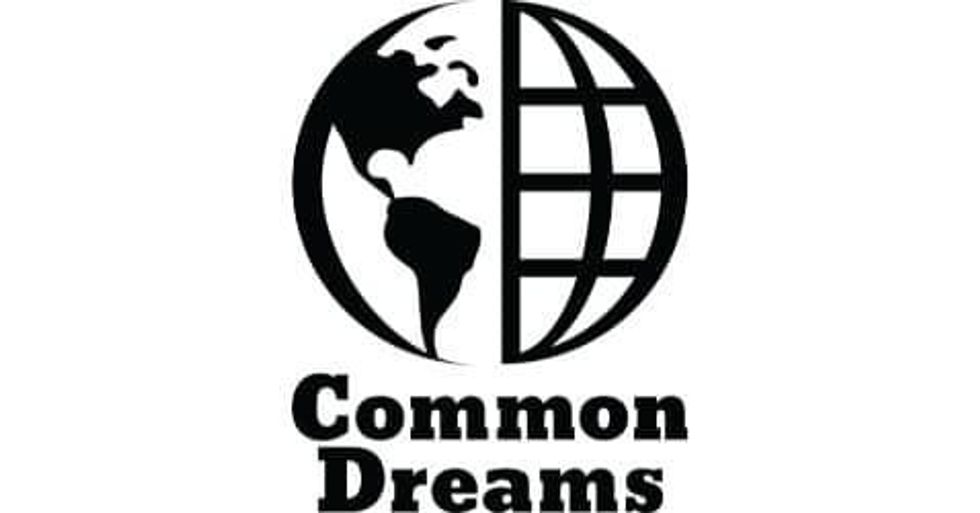Beyond W. Virginia, Unregulated Toxins Number in Tens of Thousands
'West Virginia is getting a hard lesson in how little we know about these chemicals.'

"West Virginia is getting a hard lesson in how little we know about these chemicals," Marshall University environmental engineer Scott Simonton told the Wall Street Journal Friday. "This chemical is not even listed as something the water company has to look for."
Unlike pesticides or pharmaceuticals, a "detergent" such as MCHM wouldn't be regulated under the primary drinking water standards that regulate chemicals.
Richard Denison, a senior scientist at the Environmental Defense Fund, said that unlike pesticides or pharmaceuticals, such industrial chemicals are rarely tested for toxicity to humans.
The Wall Street Journal reports:
A review of the safety data sheets from five chemical companies that make or sell the solvent had little to say about any chronic health hazards. A hazardous substance fact sheet compiled by the New Jersey Department of Health and Senior Service notes that the risk of cancer, reproductive hazards and other chronic health effects and effects "has not been tested."
As a "foaming agent" used to clean coal, Paul Ziemkiewicz, Director of the West Virginia Water Research Institute, explained that MCHM "would fall in the secondary drinking water standards which are regulated at about half a milligram/liter," West Virginia Public Broadcasting reports.
Secondary standards, he added, "are more to regulate aesthetic issues such as color, taste, and texture."
An estimated 7,500 gallons of MCHM leaked from river terminal tank owned by Freedom Industries Inc. and seeped into the Elk River--a public water supply for over 300,00 residents of West Virginia's Kanawha Valley.
About ten people have been hospitalized and roughly 170 have gone to area emergency rooms with chemical related symptoms including eye irritation, nausea and vomiting, said Department of Health and Human Resources Secretary Karen Bowling.
At the time of the spill, state and water officials had no effective way to quickly test for Crude MCHM.
American Water President Jeff McIntyre told reporters on Friday that his company didn't know much about the chemical's possible dangers, the West Virginia Gazette reports. Further, McIntyre added that he "wasn't aware of an effective treatment process."
"We're still trying to work through the [material safety data sheet] to try to understand the risk assessment of this product," McIntyre said during a Friday-morning news conference. "We don't know that the water is not safe. But I can't say that it is safe."
With so little known, residents are eager to understand why such chemicals are even permitted to be stored so close to a major water supply.
As WVPB explains:
This site was not regulated because of an apparent loophole. Plants that make or use chemicals are more heavily regulated, but this plant only stored chemicals. The last time it was inspected by state environmental officials was 1991 -- when it was an entirely different type of facility, owned by a different company.
_____________________
An Urgent Message From Our Co-Founder
Dear Common Dreams reader, The U.S. is on a fast track to authoritarianism like nothing I've ever seen. Meanwhile, corporate news outlets are utterly capitulating to Trump, twisting their coverage to avoid drawing his ire while lining up to stuff cash in his pockets. That's why I believe that Common Dreams is doing the best and most consequential reporting that we've ever done. Our small but mighty team is a progressive reporting powerhouse, covering the news every day that the corporate media never will. Our mission has always been simple: To inform. To inspire. And to ignite change for the common good. Now here's the key piece that I want all our readers to understand: None of this would be possible without your financial support. That's not just some fundraising cliche. It's the absolute and literal truth. We don't accept corporate advertising and never will. We don't have a paywall because we don't think people should be blocked from critical news based on their ability to pay. Everything we do is funded by the donations of readers like you. Will you donate now to help power the nonprofit, independent reporting of Common Dreams? Thank you for being a vital member of our community. Together, we can keep independent journalism alive when it’s needed most. - Craig Brown, Co-founder |

"West Virginia is getting a hard lesson in how little we know about these chemicals," Marshall University environmental engineer Scott Simonton told the Wall Street Journal Friday. "This chemical is not even listed as something the water company has to look for."
Unlike pesticides or pharmaceuticals, a "detergent" such as MCHM wouldn't be regulated under the primary drinking water standards that regulate chemicals.
Richard Denison, a senior scientist at the Environmental Defense Fund, said that unlike pesticides or pharmaceuticals, such industrial chemicals are rarely tested for toxicity to humans.
The Wall Street Journal reports:
A review of the safety data sheets from five chemical companies that make or sell the solvent had little to say about any chronic health hazards. A hazardous substance fact sheet compiled by the New Jersey Department of Health and Senior Service notes that the risk of cancer, reproductive hazards and other chronic health effects and effects "has not been tested."
As a "foaming agent" used to clean coal, Paul Ziemkiewicz, Director of the West Virginia Water Research Institute, explained that MCHM "would fall in the secondary drinking water standards which are regulated at about half a milligram/liter," West Virginia Public Broadcasting reports.
Secondary standards, he added, "are more to regulate aesthetic issues such as color, taste, and texture."
An estimated 7,500 gallons of MCHM leaked from river terminal tank owned by Freedom Industries Inc. and seeped into the Elk River--a public water supply for over 300,00 residents of West Virginia's Kanawha Valley.
About ten people have been hospitalized and roughly 170 have gone to area emergency rooms with chemical related symptoms including eye irritation, nausea and vomiting, said Department of Health and Human Resources Secretary Karen Bowling.
At the time of the spill, state and water officials had no effective way to quickly test for Crude MCHM.
American Water President Jeff McIntyre told reporters on Friday that his company didn't know much about the chemical's possible dangers, the West Virginia Gazette reports. Further, McIntyre added that he "wasn't aware of an effective treatment process."
"We're still trying to work through the [material safety data sheet] to try to understand the risk assessment of this product," McIntyre said during a Friday-morning news conference. "We don't know that the water is not safe. But I can't say that it is safe."
With so little known, residents are eager to understand why such chemicals are even permitted to be stored so close to a major water supply.
As WVPB explains:
This site was not regulated because of an apparent loophole. Plants that make or use chemicals are more heavily regulated, but this plant only stored chemicals. The last time it was inspected by state environmental officials was 1991 -- when it was an entirely different type of facility, owned by a different company.
_____________________

"West Virginia is getting a hard lesson in how little we know about these chemicals," Marshall University environmental engineer Scott Simonton told the Wall Street Journal Friday. "This chemical is not even listed as something the water company has to look for."
Unlike pesticides or pharmaceuticals, a "detergent" such as MCHM wouldn't be regulated under the primary drinking water standards that regulate chemicals.
Richard Denison, a senior scientist at the Environmental Defense Fund, said that unlike pesticides or pharmaceuticals, such industrial chemicals are rarely tested for toxicity to humans.
The Wall Street Journal reports:
A review of the safety data sheets from five chemical companies that make or sell the solvent had little to say about any chronic health hazards. A hazardous substance fact sheet compiled by the New Jersey Department of Health and Senior Service notes that the risk of cancer, reproductive hazards and other chronic health effects and effects "has not been tested."
As a "foaming agent" used to clean coal, Paul Ziemkiewicz, Director of the West Virginia Water Research Institute, explained that MCHM "would fall in the secondary drinking water standards which are regulated at about half a milligram/liter," West Virginia Public Broadcasting reports.
Secondary standards, he added, "are more to regulate aesthetic issues such as color, taste, and texture."
An estimated 7,500 gallons of MCHM leaked from river terminal tank owned by Freedom Industries Inc. and seeped into the Elk River--a public water supply for over 300,00 residents of West Virginia's Kanawha Valley.
About ten people have been hospitalized and roughly 170 have gone to area emergency rooms with chemical related symptoms including eye irritation, nausea and vomiting, said Department of Health and Human Resources Secretary Karen Bowling.
At the time of the spill, state and water officials had no effective way to quickly test for Crude MCHM.
American Water President Jeff McIntyre told reporters on Friday that his company didn't know much about the chemical's possible dangers, the West Virginia Gazette reports. Further, McIntyre added that he "wasn't aware of an effective treatment process."
"We're still trying to work through the [material safety data sheet] to try to understand the risk assessment of this product," McIntyre said during a Friday-morning news conference. "We don't know that the water is not safe. But I can't say that it is safe."
With so little known, residents are eager to understand why such chemicals are even permitted to be stored so close to a major water supply.
As WVPB explains:
This site was not regulated because of an apparent loophole. Plants that make or use chemicals are more heavily regulated, but this plant only stored chemicals. The last time it was inspected by state environmental officials was 1991 -- when it was an entirely different type of facility, owned by a different company.
_____________________

